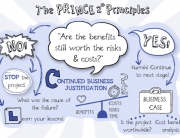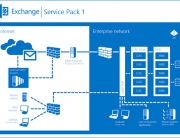A PRINCE2® project needs to ensure that there is a valid business justification. This really means that the project must be aligned to the business objective. Not only does this help to keep projects move in the right direction, but also prevents projects from continuing even if the business need is no longer there. Several years ago, as a precursor to a portfolio management implementation, I conducted an inventory of active projects for a large client of mine. Much to the executive’s surprise, 20% of those projects (representing 30% of the budget) could not be linked or aligned to any existing corporate strategy and nobody could explain the specific benefits that would be realised as a result. PRINCE2® puts business justification at the forefront by making it a mandatory PRINCE2® principle.
So how does the organisation determine business justification? This is achieved through a well-developed business case that considers not only the project costs but also the operational costs on a defined time period. This is critical so that benefits can be tracked after the project is delivered. In PRINCE2®, the business case is progressively elaborated starting with an outline then followed by a detailed business case once the project has been properly estimated financially.
In PRINCE2®, the business case does not sit collecting dust once the project is kicked off but rather it is constantly revisited and reviewed throughout the lifecycle in order to make the decision on whether the project is still viable.
The business case primarily includes:
- Executive summary – summary of the return on investment.
- Reasons – the drivers for why the project is necessary (challenge/ opportunity).
- Business options – usually at least to do nothing; do a minimum; do something.
- Expected benefits – benefits could be of many different types; measurable if possible.
- Expected dis-benefits – resulting consequences perceived to be negative.
- Timescale – both for the project delivery and for the benefits realisation.
- Cost - costs of the project delivery including operations.
- Investment appraisal – analytical comparison of benefits, dis-benefits, and costs.
- Major risks –risks that the board needs to consider whilst approving the project.
This PRINCE2® principle assists the project manager and the organisation in focusing on achieving business value as a primary motivation, and not just on delivering on time and within budget.
What has your experience been with business cases? Do you think it would be valuable if more projects followed the PRINCE2® focus on business cases?



















































































































































